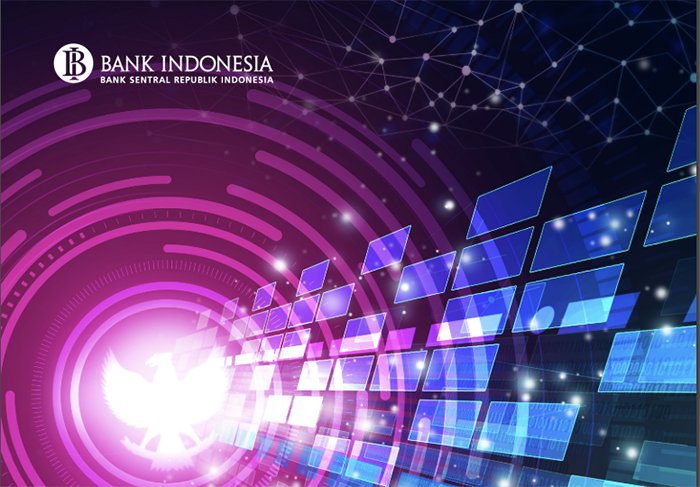Bank Indonesia (BI) have released details on Project Garuda; an initiative to explore the optimal design for an Indonesian CBDC, or Central Bank Digital Currency they’re calling the Digital Rupiah, which they believe will safeguard the sovereignty of Indonesia’s currency in the digital era.
The project reinforces BI’s preceding initiatives in advancing the digital transformation of the country, particularly with the mutual objective of accomplishing an end-to-end integration of economy and finance, which has been promoted through the Indonesian Payment System Blueprint 2025 (BSPI 2025) and Blueprint for Money Market Development 2025 (BPPU 2025).
Digital Rupiah White Paper
BI go on to explain that as a first step, a white paper concerning the development of the Digital Rupiah was released on 30 November 2022 and is available here.
The White Paper looks at the design of the Digital Rupiah under the umbrella of Project Garuda as well as the importance of initiating public communication regarding the development plan of the Digital Rupiah.
This White Paper explains:
- Digital Rupiah end-to-end integrated design configuration,
- Digital Rupiah design features that are aiming to stimulate new business models,
- Digital Rupiah technology architecture, and
- Regulatory and policy supports for the implementation of the Digital Rupiah design.
Considering its extensive implications, this national-scale initiative requires synergistic efforts in its formulation and implementation, say BI.
Similarly, the synergy with the international central banking community and international organizations is essential to ensure the alignment of the Digital Rupiah design with various interoperability initiatives for cross-border transactions.
According to reporting from Detik Finance, BI Governor Perry Warjiyo said there will be several stages for the development of the Digital Rupiah;
- wholesale CBDC (W-CBDC) for the business model of issuing, destroying, and interbank transfers with the Digital Rupiah;
- the model will be expanded into the development of monetary operations and money market business models.
- end-to-end W-CBDC integration with retail CBDC (R-CBDC).
Perry explained that “we are in the process of processing all the designs, features, security that only the Digital Rupiah has to become the official legal tender in this country. And we will use it as a reference for storing the value of digital assets. Whether used in digital banking, e-commerce, or even in the metaverse with digital rupiah.”
Detik Finance report that BI’s white paper on the Garuda Project says that the issuance of the Digital Rupiah is to provide digital payment instruments without the risk of using central bank money, reduce the risks of privately issued digital currencies, expand the scope and efficiency of payment systems (including cross-border transactions,) and expand and accelerate financial inclusion.
Apart from the Digital Rupiah, there is also the objective of providing new monetary policy instruments and facilitating the distribution of fiscal subsidies, say Detik Finance.
To access the white paper, click here.
In their attempt to help socialize the idea of a Digital Rupiah, BI have also posted some frequently asked questions (and answers.)
What is a CBDC?
CBDCs (Central Bank Digital Currency) are a new form of central bank money, which is the liability of the central bank, and is denominated in the national official currency, serving as a medium of exchange, unit of account, or store of value.
The framework of the Digital Rupiah: Why, What, and How?
The idea to develop the Digital Rupiah as Indonesia’s CBDC is driven by three key factors:
- The status of Bank Indonesia as the sole institution with the authority to issue the Indonesian currency.
- The prolonged effort of Bank Indonesia to strengthen its role in the international stage.
- The necessity to accelerate integration of the national digital economy and finance.
Based on these key drivers, the Digital Rupiah design will be formulated to achieve three objectives:
- The Digital Rupiah as digital legal tender for the Republic of Indonesia, complementing banknotes and coins.
- The Digital Rupiah as a core instrument for Bank Indonesia in carrying out its mandate in the digital era.
- The Digital Rupiah as a primary element in supporting the development of national financial systems and the integration of national digital economy and finance.
What are the stages of Digital Rupiah Development?
Bank Indonesia say there will be 3 (three) phases of Digital Rupiah development; an immediate phase, an intermediate phase, and a final phase.
Each phase will start with public consultations (consultative papers and focus group discussions), followed by technological experimentation (proof of concept, prototyping, and piloting/ sandboxing), and conclude with policy stance review.
Disclaimer: Bank Indonesia believes that the Digital Rupiah has the potential to preserve the sovereignty of the Indonesian Rupiah in the digital era, including supporting an integrated digital economy and finance as well as creating the opportunities for more equitable and sustainable financial inclusion. Nonetheless, most central banks are still mindful before taking a decision to issue a CBDC for the public. There are stages of further experimentations and discussions required. There is no one-size-fits-all solution in the development of CBDC as each country has its own unique characteristics and specific policy contexts.
Sources: Bank Indonesia, Detik Finance


